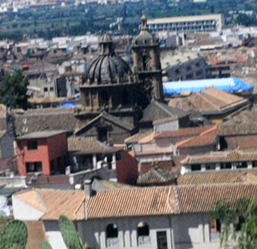Granada City Bus Tour
Monday, June 5, 2017
After the struggles in Ronda and Gibraltar to find our way in the absence of street signs, I decided to park the car and take advantage of the City Tour in Granada. Granada doesn't have street signs either, but I had a good map and could locate a parking lot on Calle Socrates close to the A-44 route into town. With Brenda putting Calle Socrates into her phone gps and Chris using it to guide me on the turns, we found the parking lot quickly. We walked down to where Calle Socrates dead ended into Calle Carril de Picon and there we found a small restaurant called Siete Gatos (Seven Cats) and decided to have some breakfast. We had left the coast at 7am and hadn't had more than a snack.
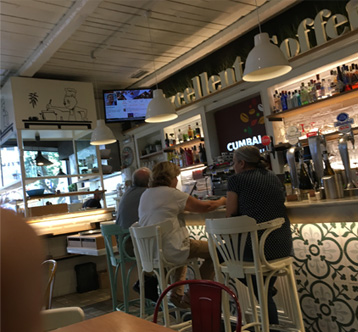 | 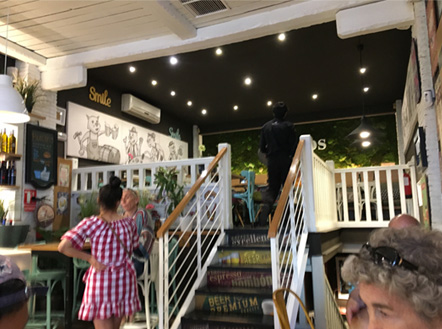 |
The way we had gotten to the Alhambra and other areas of Granada was by means of the City Tour on tour buses with three cars, two of them open passenger cars. |
 |

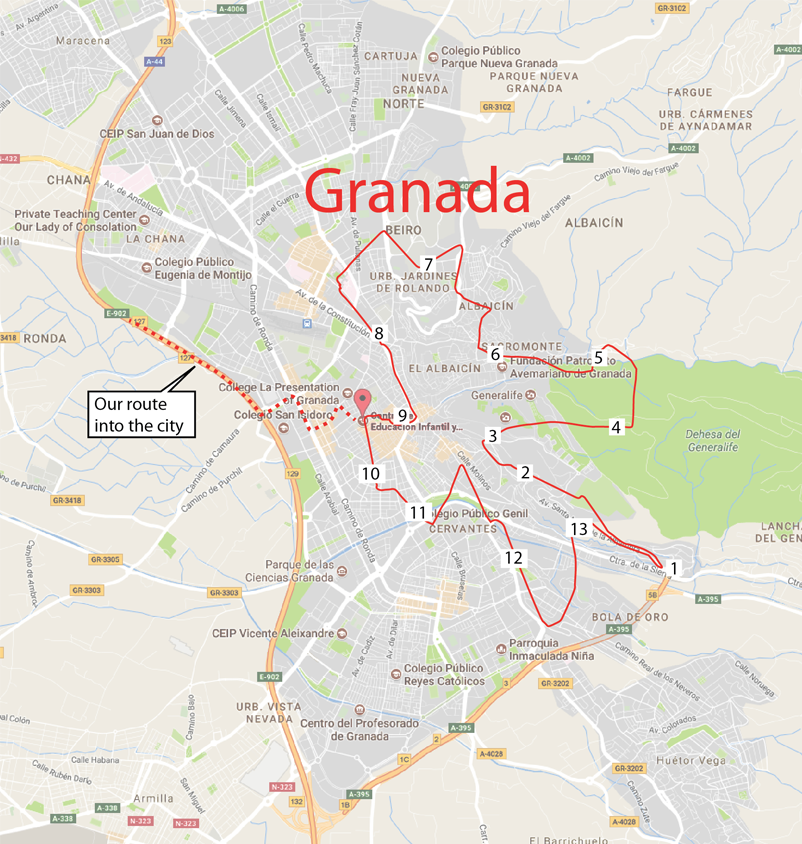
I tried to scale the city tour route to the city map of Granada, but it was hard to do because their map is not oriented to north and south and I couldn't get it to scale precisely. But it does give an idea of what part of the city the tour covered.
After our breakfast at Siete Gatos we walked down Calle Carril de Picon and Chris asked people on the street how to get over to the Cathedral. So we found the Location 9 of the tour route near the Cathedral and began our city tour there.

We started off our city tour in view of the Cathedral of Granada. The start of this cathedral was after the conquest of the last Arab Kingdom, the Nasrid kingdom associated with the Alhambra, in 1492. Queen Isabella ordered the building of a new cathedral on the site of one of the city's main mosques. |  |
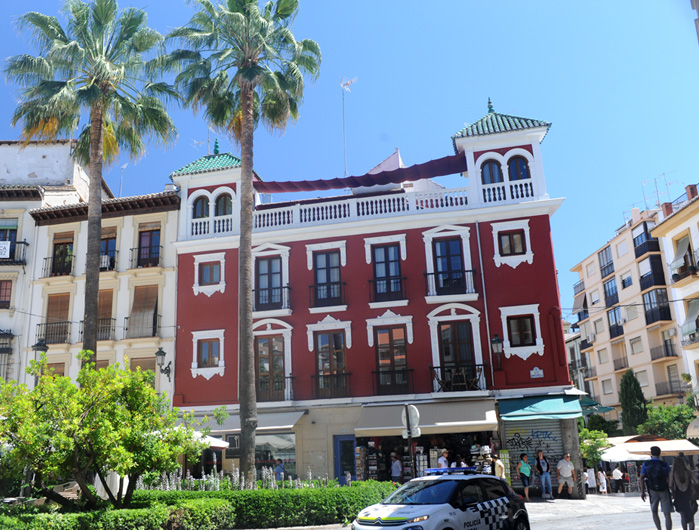 | We had walked past this dramatic red building when we had approached this plaza. |
 |  |
As we were waiting for the bus to leave, this wedding party decided to use our bus as a backdrop for a photo. They were having a good time, so we joined in. | 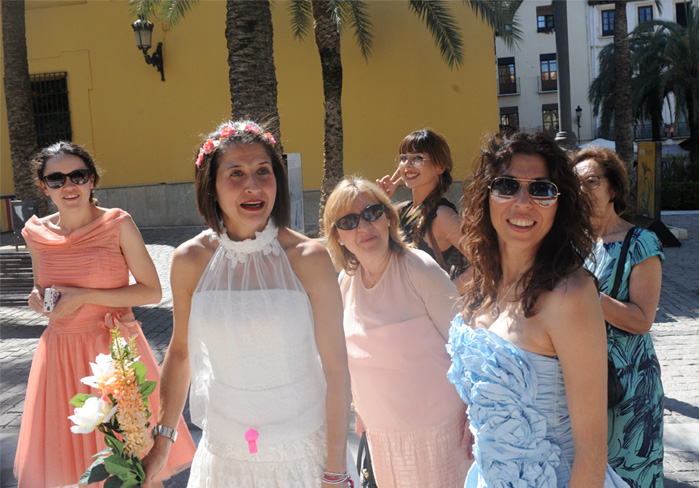 |
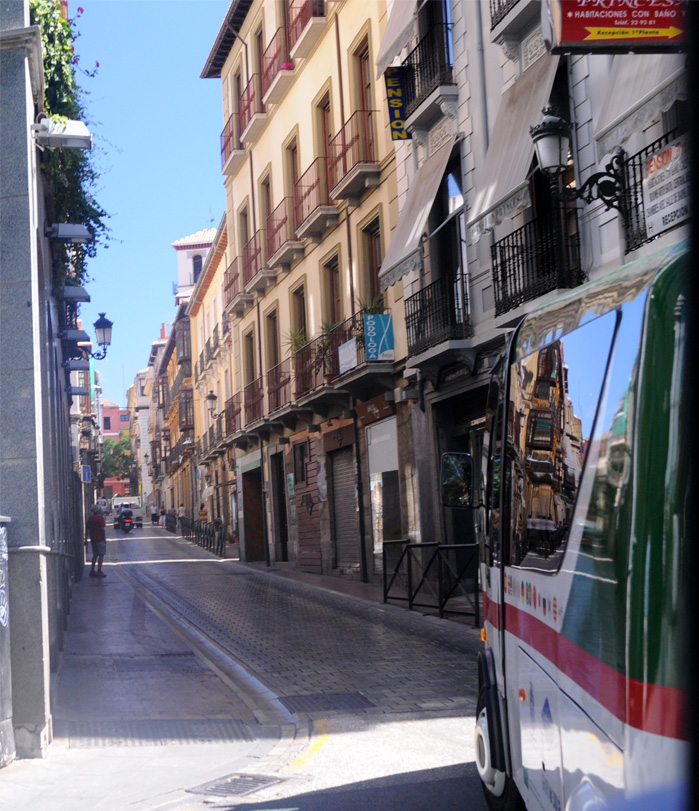 | The three-car tram was narrow, but we were still amazed that the driver could maneuver it into the narrow streets. This was actually one of the wider streets. |
We encountered this church early on the tour. The banner on the front of the church is celebrating the 500th anniversary of Santa Teresa de Jesus. | 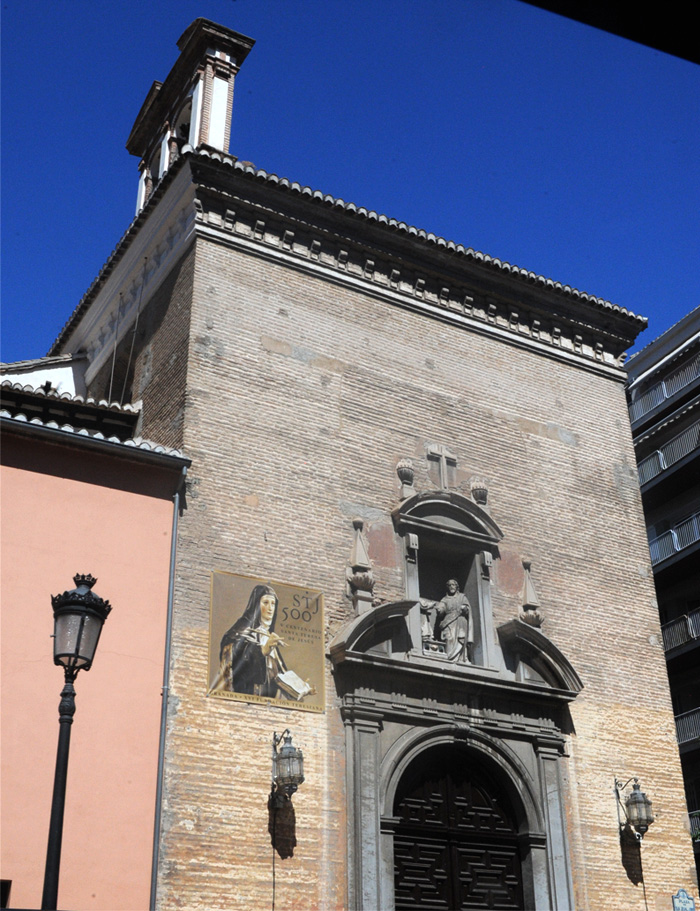 |
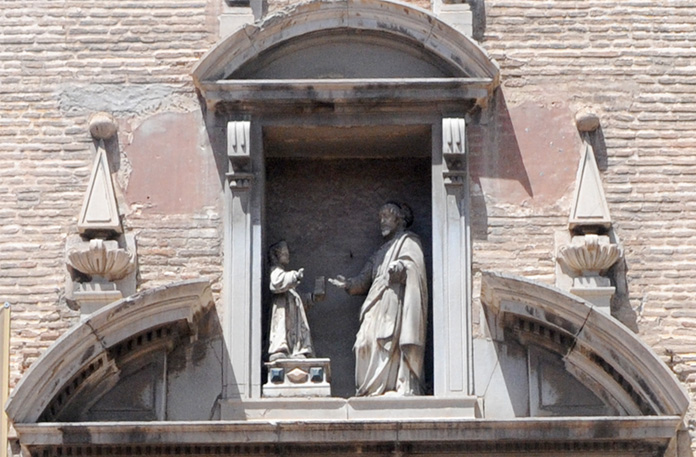 | The sculpture on the front of the church. The plaque on the front of the church said Plaza San Juan de la Cruz. |
Nice characteristic street view in downtown Granada. The tram is turning onto one of their wider inner city streets. There is even an orange tree on the corner - the presence of the orange trees throughout the city was a surprise to us. | 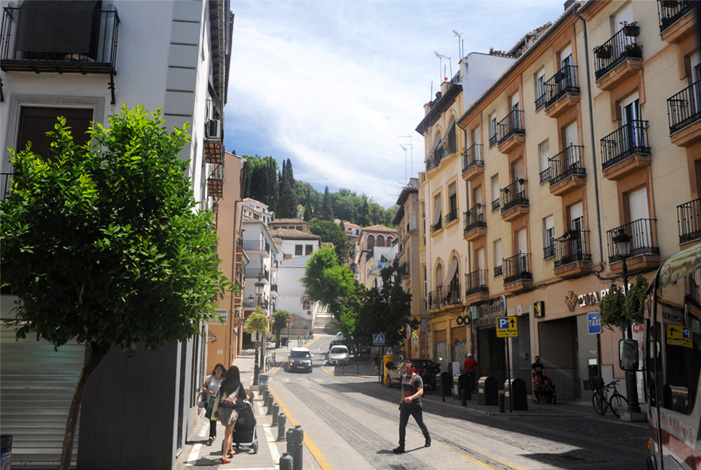 |
The bus heads uphill among these very substantial and well maintained buildings. They appear to house businesses on the ground floor and the upper floors are residences. |  |
These are just casual views as we rode the tram through the city. 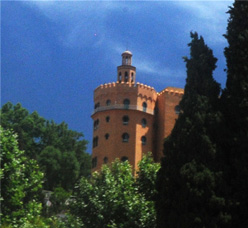 | 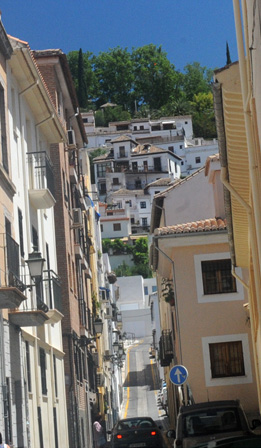 Imagine coming home with the groceries to a gate like this one! | 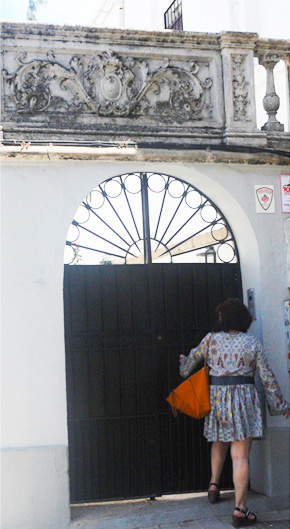 |
 |  |
Heading up a steep hill, we came close to the orange building with the round dome, which I figured had to be significant. | 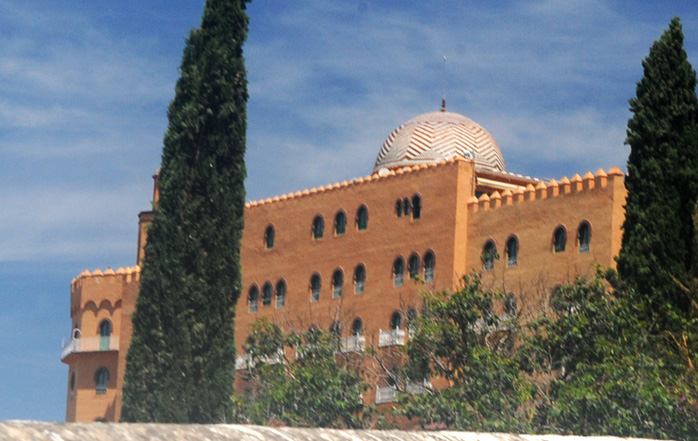 |
We proceeded to the Alhambra, which is formally the start point for the tour. That visit is detailed with our exploration there.
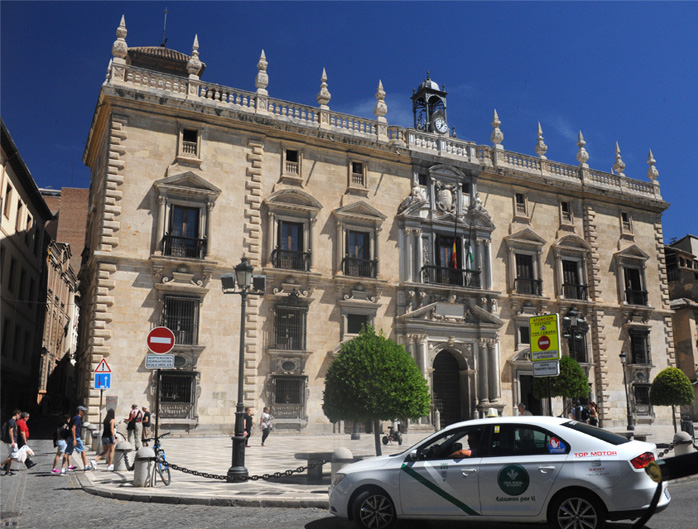 | This is the Real Chancilleria at Plaza Nueva. The building dates from the 16th century, when it served as one of the high courts in Spain, with jurisdiction over the regions of Andalucia, Extremadura, Murcia, La Mancha and the Canary Islands. |
Considered an example of early baroque architecture in Spain, the main patio is attributed to architect Diego de Siloe, while the building's facade is the work of architect Francisco del Castillo. | 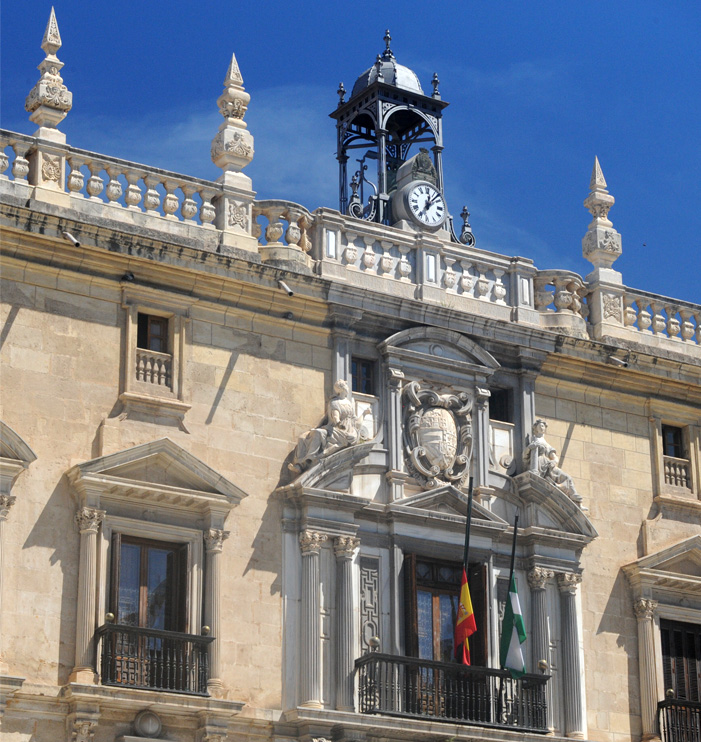 |
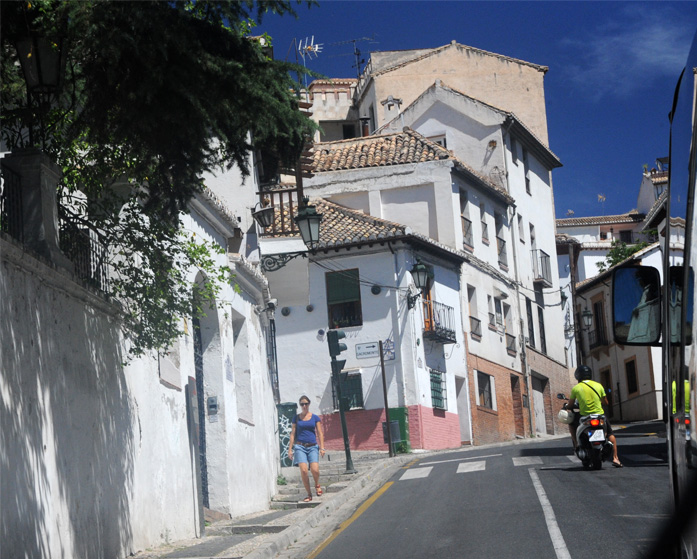 | The tram had to manage some steep inclines as well as narrow roads. The dense housing took many forms. |
 | This is the only view we got of this huge structure from this location. The Alhambra is so huge that you see it from different angles and different locations. |
This appears to be the same structure, but from far below it on another street. |  |
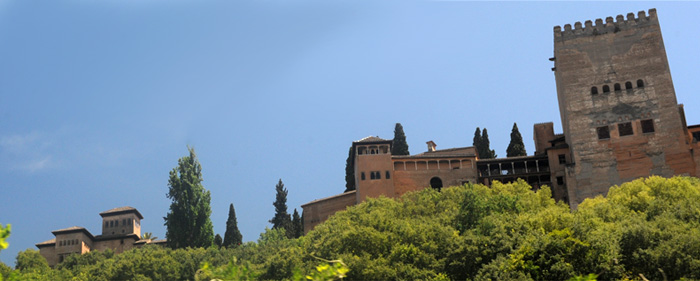 | And there appears to be even more of it! |
Big red structure on top may be The Abad’a del Sacromonte (Abbey of Sacromonte) is located atop Monte Valpara’so. Here, in the 17th century, the Lead Books of Sacramonte detailing the martyrdom of Saints Cecilio, Tesif—n and Hiscio were found. Source: www.andalucia.org
Around curves and up hills, the tram handled the narrow streets. |  |
 | Sometimes there was a large distance between streets. That's why they make the vehicles narrow. |
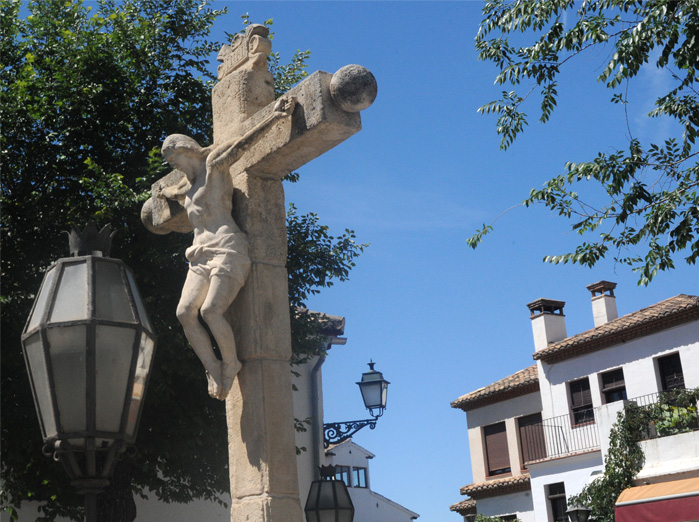 | Cristo de los Favores |
Turning the corner at Placeta de S. Miguel el Bajo had to take practice. He didn't appear to have more than six inches clearance. | 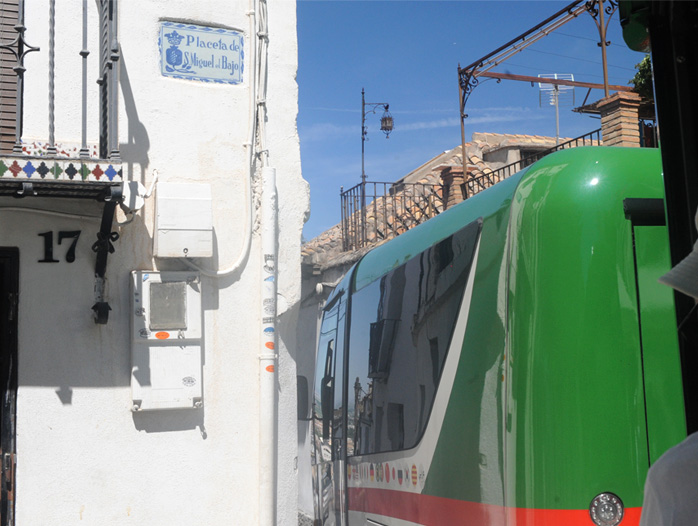 |
 | That tight squeeze put us in a position to see the city. In view is the Baroque Basilica de San Juan de Dios which dates from the 18th century. |
Another tight squeeze for the bus put us in position for a second city view. | 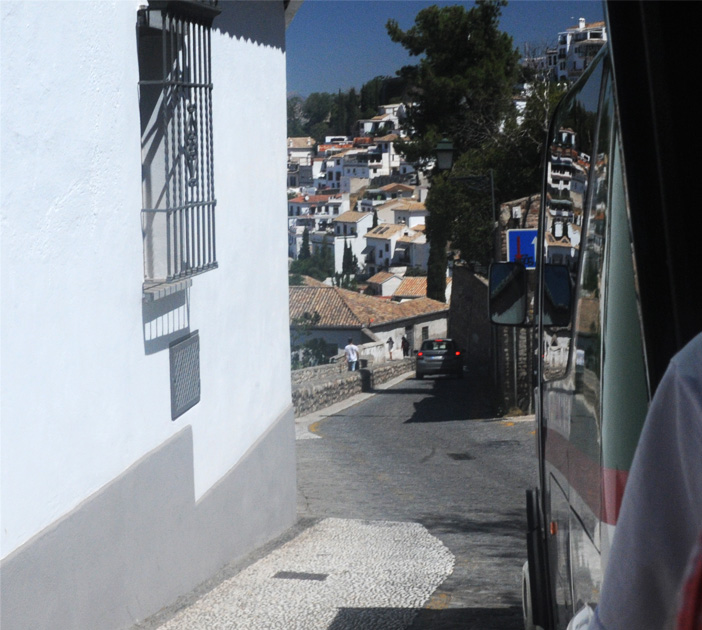 |

 | This city view gives a look at two churches. |
I think the one on the right is the Baroque Basilica de San Juan de Dios which dates from the 18th century. It has a beautiful Baroque front framed by towers with slate capitals. The Basilica de San Juan de Dios is formed by two bodies with sculptures and reliefs and divided into three lanes by Corinthian columns.
Another tight turn into a narrow stone street. These streets seem more sized for motorbikes and baby carriages than for buses. | 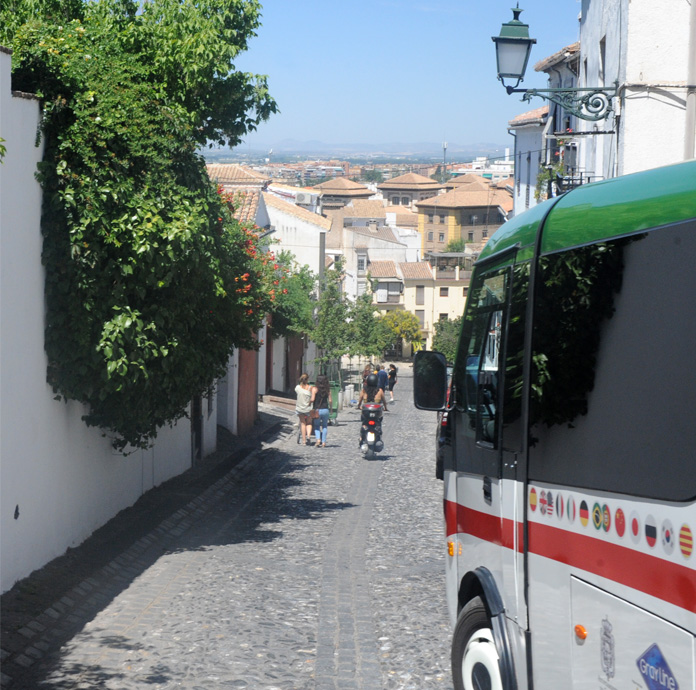 |
We got a good view of this church from the tour bus, but I have not been able to identify it. | 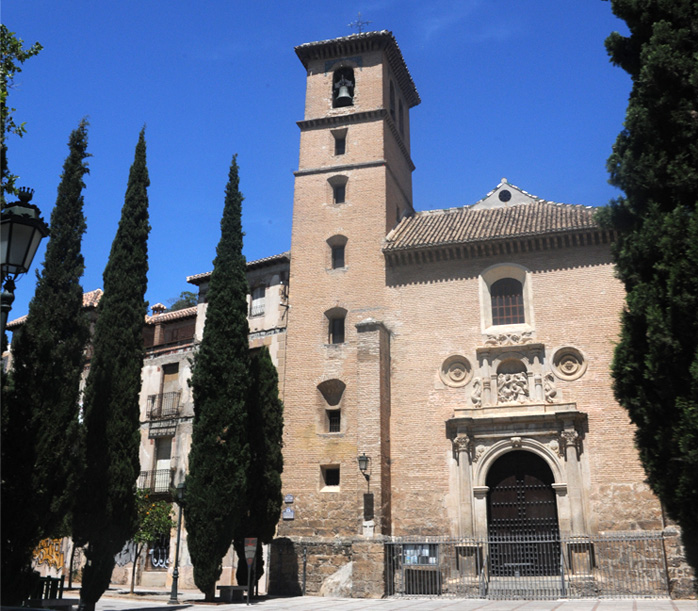 |
 | Iglesia de San Gil y Santa Ana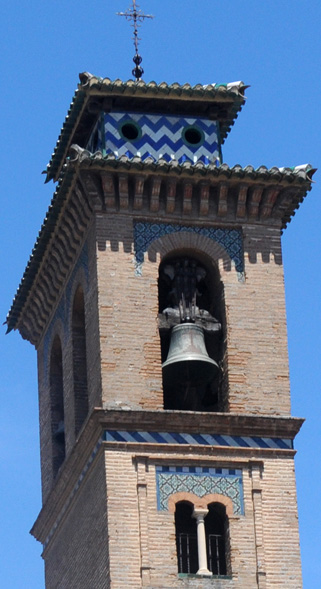 |
This is considered one of the best remaining churches of Mudejar architecture in the city.The Church of San Gil and Santa Ana is just across the Plaza Nueva from the Royal Chancery. Constructed in the 16th century according to the plans of architect Diego de Siloe, the church was built on the site of a former mosque. The church contains several chapels, an impressive Plateresque doorway, and a church tower with several balconies.
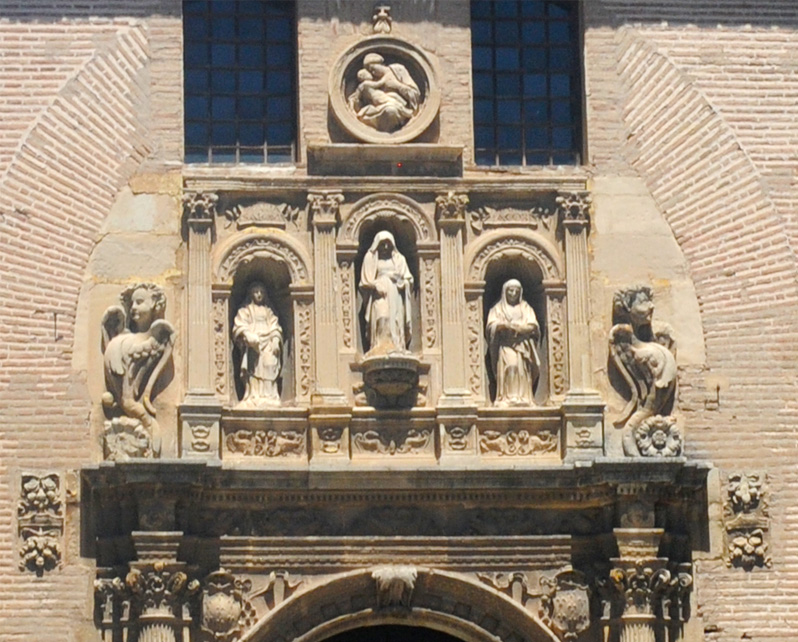
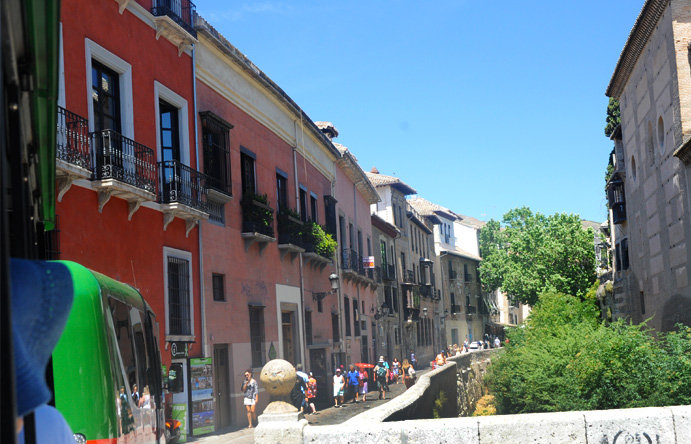 | We went along one street which had a river on its right. The Carrera del Darro is one of Granada's most scenic walks. On the Darro river's right bank, it is crossed by two brick and stone bridges (the Cabrera and Espinosa bridges) |
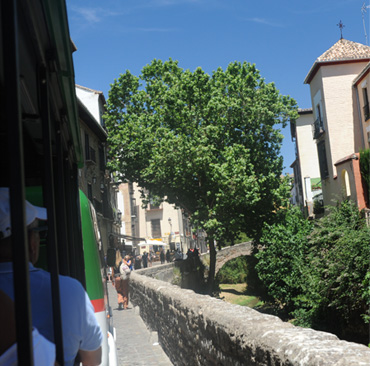 | 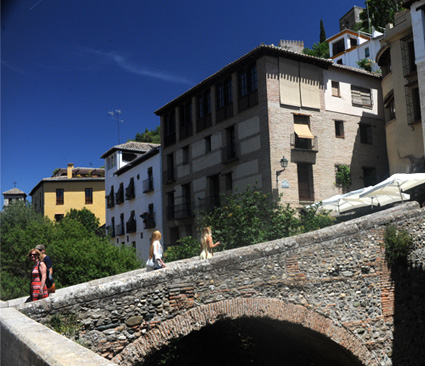 |
This street proceeds by the Museo Arqueologico y Etnologico de Granada and the Paseo de los Tristes.

A fancy building like this has got to be important, I just don't know what it is yet. The fact that "Plaza de Congresos" is on the front of the bus may be a clue. | 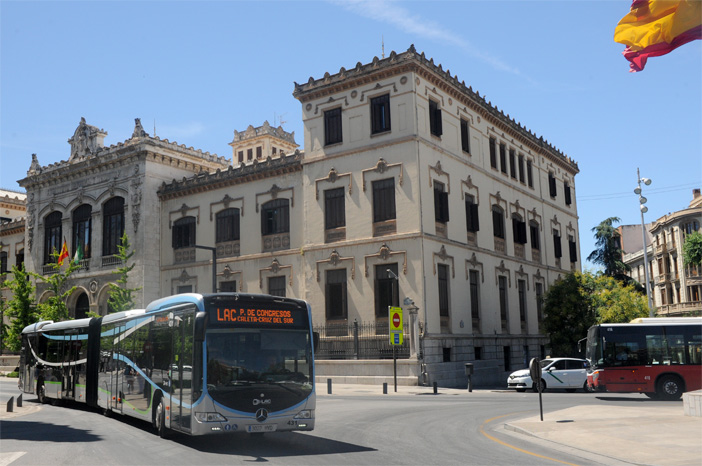 |
 | This church was not far from the Cathedral where we started our tour. |
A pleasant example of a downtown street with shops. Shop windows open directly to pedestrian traffic, so you could buy a cup of coffee, etc. Most of the streets were stone. Maybe ok for carriages, but not designed for modern cars and buses. This was close to the end of our tour. | 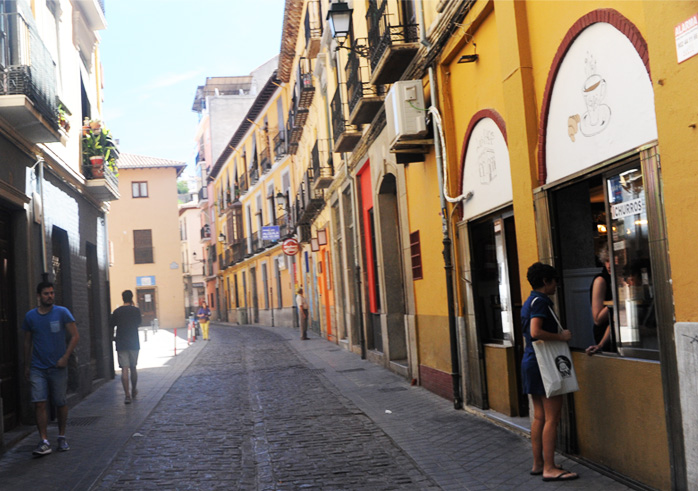 |
 Even down in the city center there were some tight turns. You understood the warnings to keep your head and elbows inside the vehicle. 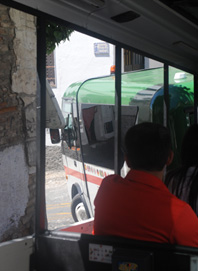 |  | 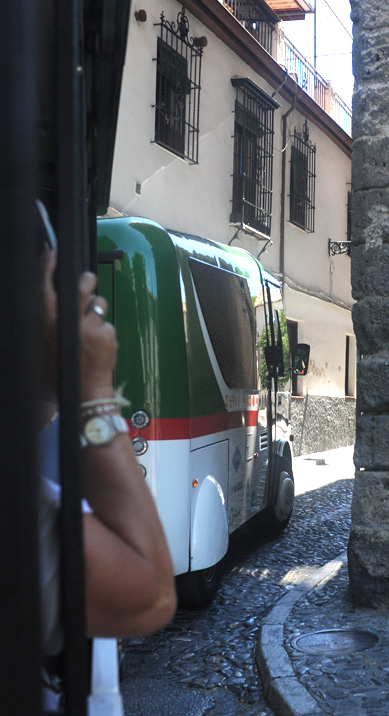 |
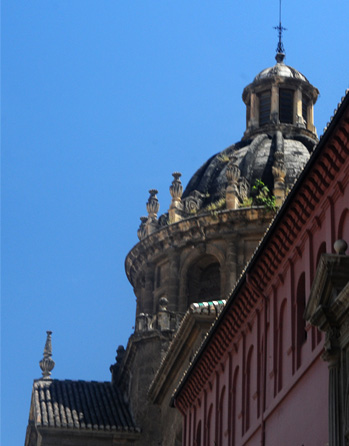 | 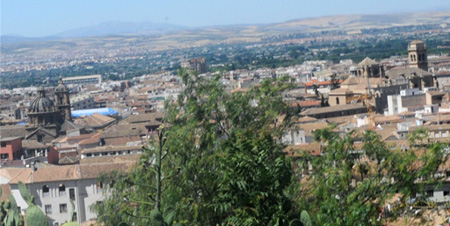
|
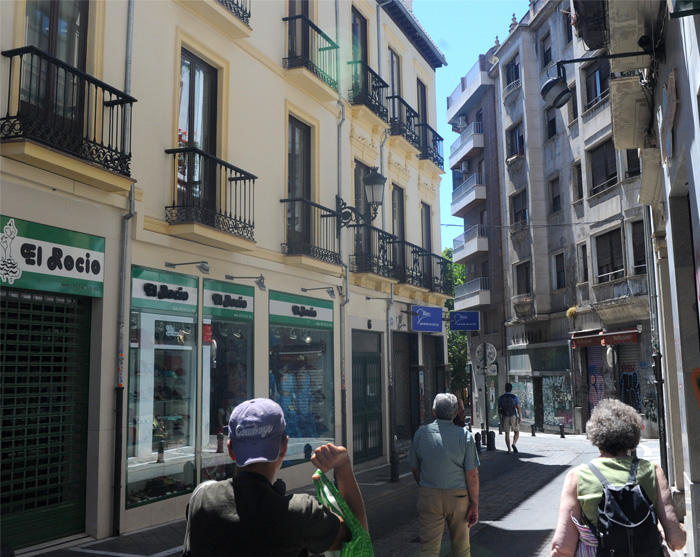 | Chris and Brenda walking back through the city streets toward the parking lot where we left the car. We had made two loops of the city and had a pleasant walk around the Alhambra and were now ready to head back toward the south coast. |
Since we had to walk almost right by the Siete Gatos Restaurant on our way to the car, we decided to just stop there again and have supper. |  |
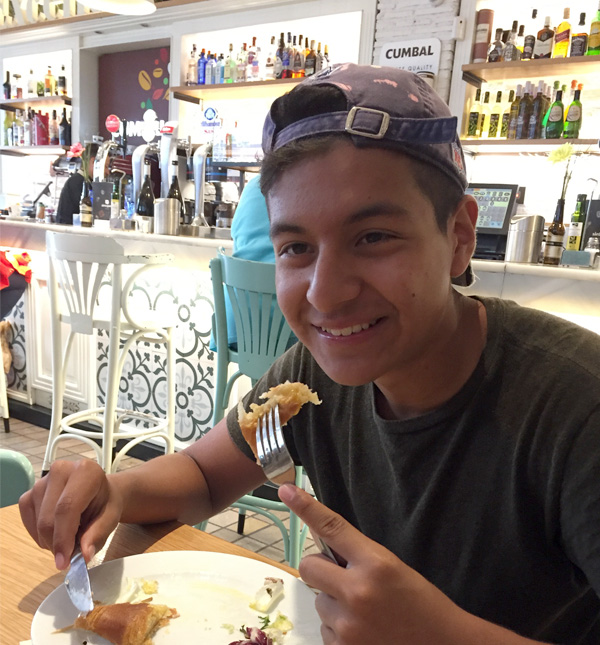 | I noticed that we didn't get any argument out of Chris about our decision to stop and eat. So we had two pleasant meals today with the siete gatos. We had noticed that they had played a couple of English popular Christian songs this morning, and when I got the check, it acknowledged their inclination toward Christian themes.  |

We found our way to Calle Socrates and retrieved the car. With the aid of the gps set on Club Marbella, we moved smoothly out of Granada and were soon back on A-92 headed westward. Now we were back in the world of the olive groves.

Making it back to our strange but now familiar mountain signaled the fact that we had reached our left turn southward on A-45 toward Malaga.

Past a favorite vista of hayfields and trees along the A-45.

We made it to the AP-7 and to our exit 200 to descend toward Calahonda and then to Club Marbella. On the way we pass the Calahonda Baptist Church in the middle of this view and get a nice view of the developments along the coast of the Mediterranean Sea. We reached Club Marbella at about 7:45pm.
| Back to Seville |
2017
